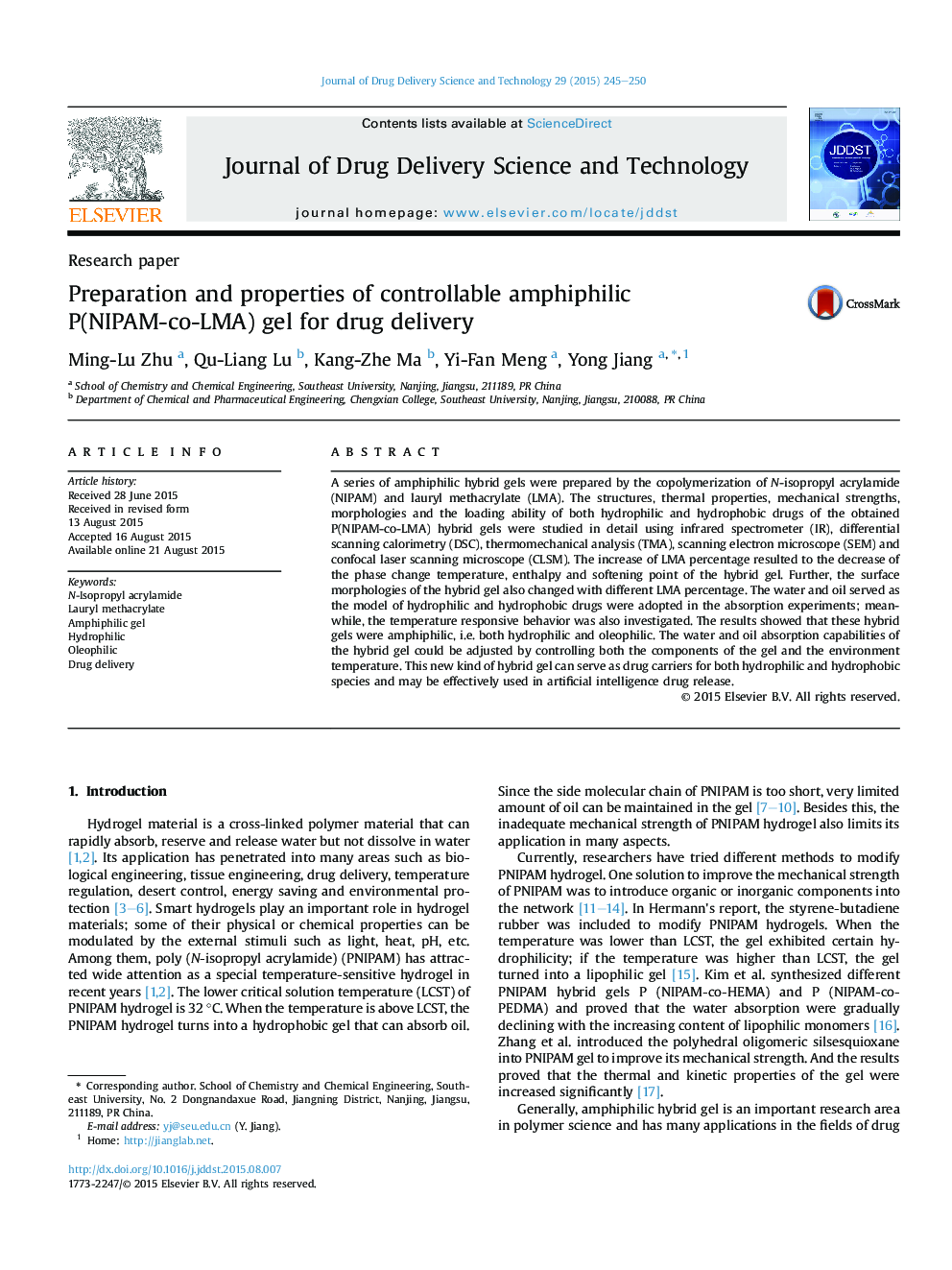| Article ID | Journal | Published Year | Pages | File Type |
|---|---|---|---|---|
| 2483227 | Journal of Drug Delivery Science and Technology | 2015 | 6 Pages |
A series of amphiphilic hybrid gels were prepared by the copolymerization of N-isopropyl acrylamide (NIPAM) and lauryl methacrylate (LMA). The structures, thermal properties, mechanical strengths, morphologies and the loading ability of both hydrophilic and hydrophobic drugs of the obtained P(NIPAM-co-LMA) hybrid gels were studied in detail using infrared spectrometer (IR), differential scanning calorimetry (DSC), thermomechanical analysis (TMA), scanning electron microscope (SEM) and confocal laser scanning microscope (CLSM). The increase of LMA percentage resulted to the decrease of the phase change temperature, enthalpy and softening point of the hybrid gel. Further, the surface morphologies of the hybrid gel also changed with different LMA percentage. The water and oil served as the model of hydrophilic and hydrophobic drugs were adopted in the absorption experiments; meanwhile, the temperature responsive behavior was also investigated. The results showed that these hybrid gels were amphiphilic, i.e. both hydrophilic and oleophilic. The water and oil absorption capabilities of the hybrid gel could be adjusted by controlling both the components of the gel and the environment temperature. This new kind of hybrid gel can serve as drug carriers for both hydrophilic and hydrophobic species and may be effectively used in artificial intelligence drug release.
Graphical abstractFigure optionsDownload full-size imageDownload as PowerPoint slide
